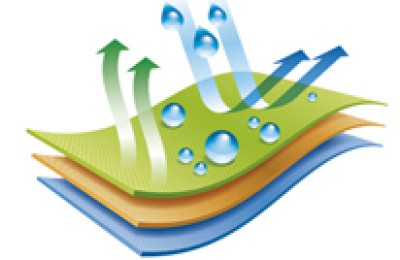Cotton prices skyrocketed, and the textile industry asked the government to take measures to curb cotton prices
Although June has entered the off-season for fabrics, most domestic fabric companies report that the overall purchase and sales operation is stable. However, this stable operation trend has been affected by the skyrocketing prices recently. The cotton price has broken. With the skyrocketing price of cotton futures, the auction price of reserve cotton is getting higher and higher under the premise that the daily volume is relatively insufficient. On July 1, the average transaction price of reserve cotton was 13,368 yuan/ton, which is 14,272 yuan at a discount of 3,128 yuan. /Ton. Textile companies were caught off guard by the soaring cotton prices that could not be digested downstream. Currently, most textile companies are facing losses and feel huge pressure. In order to cope with the current sudden rise in cotton prices, many textile companies said they would wait and see for a few days. Without participating in the reserve cotton auction, Henan and other fabric industry associations have reported to relevant national departments to increase the daily amount of reserve cotton and take measures to curb the skyrocketing cotton price. If cotton prices cannot come down, textile companies will limit production or suspend production for holidays. and other measures to deal with it.
Recently Domestic cotton spot prices are also relatively strong. Although there is not much market trading, the price focus has increased slightly. Among them, the mainstream price of 3128B is around 13,400-13,600 yuan/ton. Some merchants are reluctant to sell and are waiting for market changes in the future. It is currently estimated that a large amount of new cotton from Xinjiang will generally arrive in the mainland market around November, and the stocking will basically end at the end of August. There will be a 2-3 month blank period in the middle. It is understood that textile companies are fully prepared during the current stocking stage. Correspondingly, the current inventory is insufficient relative to demand. In the early days, traders were operating with low inventories. There is also a need for replenishment operations when the market may improve. The long-staple cotton market continues to be weak, merchants are not selling well, and there is still some backlog of inventory. The current mainstream factory price of grade 137 is around 20,700-20,800 yuan/ton, and the price of grade 237 is at the level of 19,900-20,000 yuan/ton.
ICE Cotton futures rose more than 1% on Friday, reversing Thursday’s decline of more than 2%. Among them, the actively traded December cotton futures closed up 0.82 cents, or 1.28%, at 64.99 cents per pound, with a trading range of 64.34-65.18 U.S. cents, mainly due to profit-taking by short sellers ahead of the U.S. long weekend and a decline in the dollar. Although China sells reserves to increase market supply, the current transaction prices are relatively high due to continued hot auctions. In particular, the transaction rate of imported cotton has always maintained 100%, which has obviously given a certain boost to the US cotton market. At the same time, Maodu cotton is expected to significantly reduce production. The local support market purchase support, as well as the fact that US cotton has entered a critical period of crop growth and climate speculation factors have increased, all lead to the possibility that ICE cotton futures will fluctuate and strengthen in the short term.
Domestic The Zheng cotton market has been at the daily limit for many months, and the volume has increased again in the far month. The main 1701 contract of Zheng cotton opened at 14760 and closed at 15425, which was an increase of 735 from yesterday’s settlement price, a high of 15425 and a low of 14730. The settlement price was 15240, with 873112 lots traded, an increase of 171000. The number of positions held was 492,160, an increase of 41,824. The domestic cotton price index has generally risen sharply again. Ccindex3128B, which represents the domestic standard grade cotton spot, is 13,333 yuan/ton, an increase of 48 yuan/ton from the previous trading day. The state-owned cotton reserve is still the dominant force in the current cotton market. The recent daily output has remained at 20,000-30,000 tons or lower. The rush to buy by textile companies and traders is still very obvious. In particular, Zheng cotton has surged for three consecutive days, stimulating bidding. Transaction prices also rose significantly. Due to the relatively insufficient supply of domestic lint resources, the quotations of traders in the spot market have also increased. However, due to the low to high prices in the spot market, textile companies still generally maintain the strategy of picking as they are used, and the inventory level of raw materials continues to run at a low level, especially for cotton in the recent period. The sharp rise in spot prices has clearly exceeded the affordability of downstream fabric companies. The unlimited rise in the spot market is prominent. Many textile companies are eager to call for the increase in the rotation of state-owned cotton reserves. The market outlook should continue to pay close attention to the rotation trend of cotton reserves.
–The largest supplier of functional fabrics in the country and northwest,Professional fabric protection expert for more than ten years. Our anti-static fabricis made of new conductive fibers and cotton fibers It is made of advanced spinning equipment and weaving technology, and is processed by printing and dyeing. It is divided into three categories: pure cotton, polyester cotton, and chemical fiber. The fabric has good durability and anti-static function, and is also dust-proof, washable, and dry-cleaning resistant. Fabric fabrics usually adopt twill or plain weave, which combines fashion and functionality while having the special effects of softness, comfort and good breathability. This fabric complies with the national standard GB 12014 “Antistatic Workwear” and is an ideal fabric for functional antistatic workwear. Suitable for labor protection, decorative cloth, etc. in places with static electricity hazards such as petroleum, chemical industry, electronics, coal mines, etc.
AAAGFHTRYKUYIU7OUP
Disclaimer��:
Disclaimer: Some of the texts, pictures, audios, and videos of some articles published on this site are from the Internet and do not represent the views of this site. The copyrights belong to the original authors. If you find that the information reproduced on this website infringes upon your rights, please contact us and we will change or delete it as soon as possible.
AA





